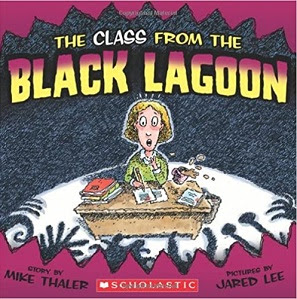Sing It! Strange Fruit: Billie Holiday and the Power of a Protest Song by Gary Golio
ALL SHE WANTED TO DO WAS SING.
Billie wasn't going to scrub floors like her mother. She had plans to be somebody.
Pretty, light-skinned, already a veteran of small jazz clubs and with a few hit records with noted musicians, Billie had her own way of singing, listening to the saxophones and trumpets, and improvising around the melody in what jazzmen Beiderbecke and Armstrong had called "correlated choruses." She had her own voice.
IT WAS THE HEART OF JAZZ.
At 23 she was hired by celebrated clarinetist, Artie Shaw, the first black girl singer with a wildly popular white dance band, appearing at the famous Blue Room in New York City. But off the bandstand, Billie was not allowed to mingle with the customers. She had to sleep in the tour bus instead of the hotel, take freight elevators, and warm up in a small back room instead of with the band. Billie quit.
Luckily, she found a gig at new club in Greenwich Village, Cafe Society, where there was no color line. One night the club manager, Barney Josephson, introduced Billie to a local high school teacher, Abel Meeropol, a songwriter who wanted her to sing a song he had written called "Strange Fruit."
Southern trees bear a strange fruit.
Blood on the leaves and blood at the root.
Black bodies swinging in the southern breeze,
Strange fruit hanging from the poplar trees.
IT WAS A SONG ABOUT LYNCHING.
Billie wasn't quite sure she should do it: it wasn't really a jazz song and performing it in public could mean trouble. All of them realized that this song was racial dynamite. Josephson knew that it had to be given special handling, a different delivery, and he had the feeling Billie was the one who could do it.
Barney planned special staging. He told her that when she finished the song, she could quietly leave the stand. Billie agreed.
That night, as the lights dimmed and Billie began to sing, everyone seemed to freeze in place.
Billie's face became more expressive. The last few words--about a strange and bitter crop--sounded more like a cry of pain.
THE SPOTLIGHTS DIMMED. BILLIE WAS GONE. THERE WAS NOTHING BUT SILENCE....
But then the audience rose from their seats and the room exploded with applause, and backstage Billie heard them and had no regrets.
"I'LL FEEL IT IN MY GRAVE," SHE TOLD HER MOTHER.
And the applause for Billie Holiday has never faded. In Gary Golio's poignant mini-biography, Strange Fruit: Billie Holiday and the Power of a Protest Song
This book is strongly recommended for school and public library collections and for class book study for older elementary and middle school students. Says Publishers Weekly's starred review, "...a potent reminder of the power of art to combat intolerance and hate."
For other musical biographies by Gary Golio, see my reviews here.
Labels: Billie Holiday (1915-1959)--Biography, Lynching--United States--History (Grades 3-8)





















